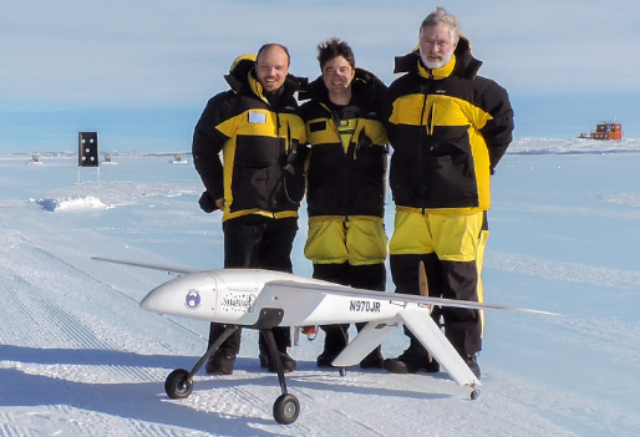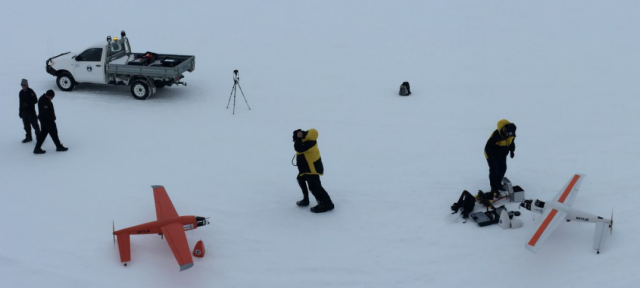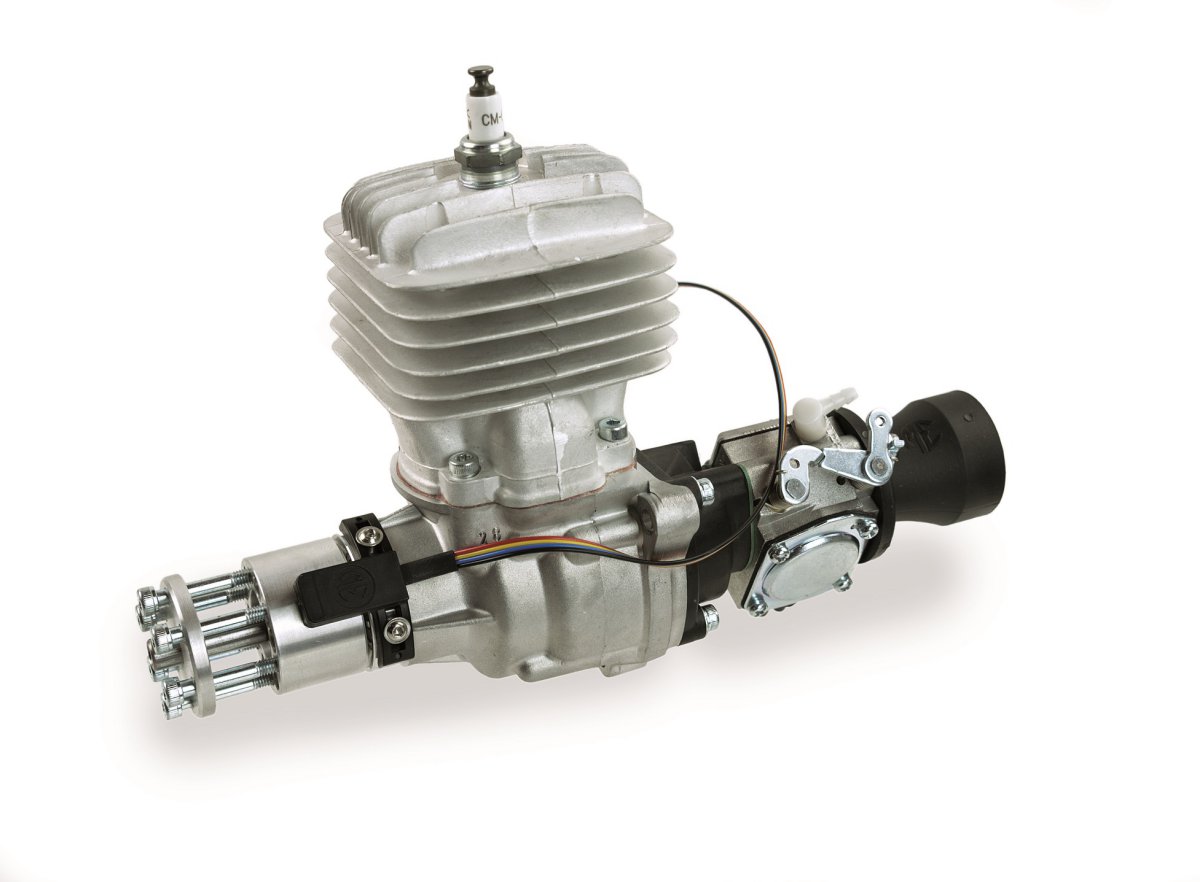At the end of February 2016, mechatronics lead Kevin Bass of Intuitive Machines and contracted pilot Mike Laible set off on a planned excursion to Antarctica. In cooperation with the UTIG (University of Texas Institute for Geophysics) and ICECAP (Investigating the Cryospheric Evolution of the Central Antarctic Plate) Intuitive Machines successfully flew multiple runs with a 3W-powered unmanned aerial vehicle platform, Tiburon Jr., on the coast of Antarctica.
ICECAP currently uses an upgraded World War II era DC-3 with a suite of geophysical instruments to map the thickness of the ice sheet and measure the texture, composition, density and topography of rocks below the ice.
Intuitive Machines uses a Tiburon Unmanned Aerial System (UAS), which provides the rapid delivery of dense yet meaningful aerial-based information about activities at or below the surface to enable you to make informed decisions about your business. By combining sensor technologies, employing sophisticated data analysis algorithms, and using cost-efficient unmanned aircraft, we can provide a complete aerial inspection solution that has greater cost-benefit than the systems currently employed.
The Tiburon UAS fills a gap in the existing market for a medium-size UAV with high speed capability. The 80+ knots dash speed of the Tiburon provides it with the ability to reach a target area faster than currently in-class UAV’s. Its speed, coupled with the ability to disassemble the carbon fiber airframe in less than 15 minutes for transport, makes the Tiburon a versatile platform. A remote ground station can accompany the ground transportation trailer for a truly portable stand-alone solution. Aircraft operations can be fully autonomous or man-in-the-loop, depending on customer requirements.
Intuitive Machines’ Tiburon Jr. Unmanned Aerial Vehicle (UAV) platform provides significant savings in operational costs and time. Scientists have become increasingly concerned about the potential impacts of climate change on the East Antarctic ice sheet, the largest remaining body of ice on Earth. They warn that ice-filled basins within the ice sheet could melt in a warmer world and release large volumes of water into the sea, raising global sea levels.
The UAV Tiburon Jr. has a unique swappable nose cone enabling a modular ISR sensor pod including visible, IR, and multispectral options – as well as many other capabilities. With an 80 knot cruise speed and a 15 minute assembly/disassembly – deploying a Tiburon Jr. UAV will save time and be significantly safer compared to manned flights in hazardous environments like Antarctica.
Flight base was the Australian Wilkins Aerodrome in the south-east of Antarctica. From Wilkins Aerodrome, the team launched Tiburon Jr. and collected valuable testing and environment data. Battling harsh weather and constantly changing conditions, the team flew Tiburon Jr. several times allowing tests of all aspects of our UAV platform. “These flights provided us with valuable insights into cold weather flight characteristics. We successfully demonstrated that our onboard flight system is hardened to the proper amount for the harsh environment”, mentioned Bass.
Additionally, the onboard software proved to be very robust as it dealt with sensors whose response to these extreme conditions was not previously known. “This robust flight system is what enables our UAV platform to be used in a wide variety of applications. And an additional factor was the engine from 3W-International,” said Bass. “We chose the 3W engine based on their reputation for quality engines. Given the value of the airframe and onboard sensor suite, selecting the best engine available from a manufacturing quality and operational reliability standpoint was paramount. We have been very pleased with the 3W-28iCS. The support of the 3W-team has also been outstanding,” added Scott Arndt, the Tiburon UAV Design Lead.
With more than 30 years of experience in designing, manufacturing and testing 2-stroke engines, 3W has developed and patented the newest generation of gas and Heavy Fuel (HF) engines for the UAV-industry. The German engine supplier is the only engine manufacturer having produced 1-, 2-, 3- and 4-cylinder engines.
Tiburon Jr. is equipped with a 1-cylinder 3W-28iCS gas engine, which provides 2.9 HP. The engine was delivered as Competition Series (CS). In this version, engines are optimized for performance enhancement. The cylinders are modified and suitably reworked in the crankcase. Compression in particular is increased whereby the engine’s torque and power are increased. Throttle response also improves in the lower rotational speed range. The CS’s cylinders are painted with a highly temperature-resistant, metallic-orange 2K engine paint applied in two coats.
“We never tested one of our engines in those hazardous conditions”, said Karsten Schudt, CEO of 3W-International. “But we are proud, that our engines helped Intuitive Machines to accomplish this mission and to provide important data to save Antarctica.” All engines of 3W-International are tested at the company-owned test stands before delivery. “We are testing all aspects of the engine, but we are not able to provide test conditions like in the Antarctica upfront,” explained Schudt.
The flight of Intuitive Machines illustrated and proved that an excellent developed UAV like the Tiburon Jr, equipped with a powerful and reliable engine can be an efficient alternative to manned airplanes and helicopters, even in hazardous environments.
Source: Press Release



